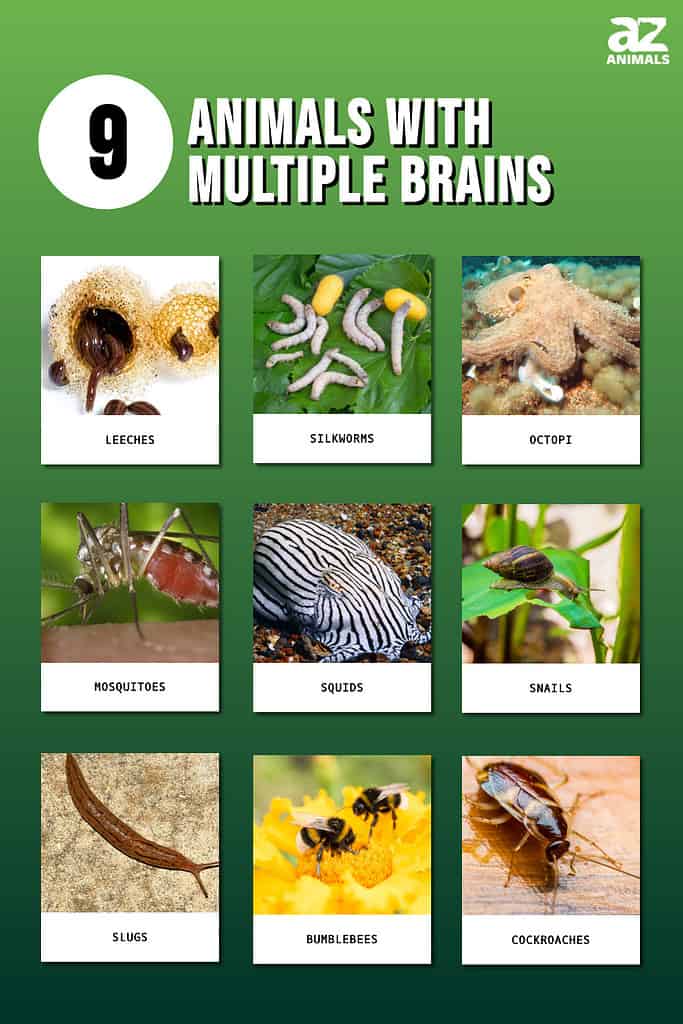
Humans only have one brain, and it’s easy to assume that the same is true for all other animals. However, that’s not quite the case. While animals most like humans do tend to have one brain, there are definitely animals with multiple brains out there.
Some animals have only one or two extra brains, but there are some animals out there with as many as 32 brains. To see which animal is host to 32 fully-functioning brains as well as other animals with multiple brains, keep reading.
9. Cockroaches

Though they are rather gross, cockroaches are interesting creatures.
©iStock.com/Wi6995
The cockroach is one animal that has multiple brains. They have two brains that are separated. One is in the head, as you might expect. The other is near the abdomen. This is what allows cockroaches to continue to move for a while even if they become decapitated. Though they might live for a minute, they will still die shortly after decapitation because they need both to survive.
The two brains also allow cockroaches to move much faster than you might expect. They are also very intelligent animals, remembering where they left items, and recognizing various objects. They can even remember faces.
Though their brains are about 1/20th the size of a human’s and have about a third of the number of neurons, they have twice as many synapses. These synapses are what pass information back and forth. This allows for memory storage and keeps the brain active.
8. Bumblebees
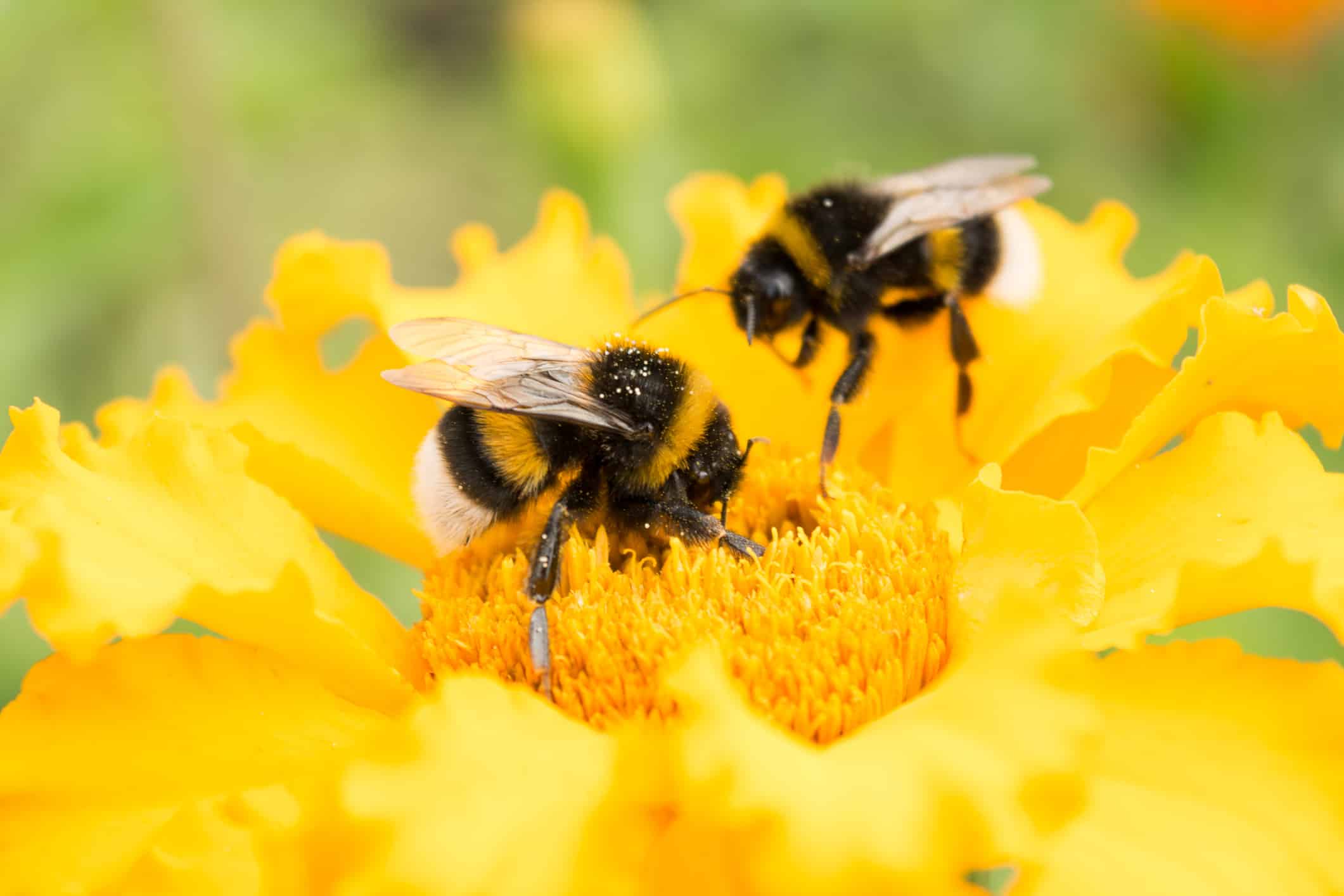
Though bumblebees work together as a group, they still have a couple of individual brains.
©nnorozoff/iStock via Getty Images
Bumblebees have a total of three brains. Each one focuses on controlling a different part of the body. One controls the wings, another controls the stinger, and the third manages the antennae. These brains are more focused on instinct and basic memorization than actual memories and behaviors.
Compared to other insects and their sizes, bumblebee brains are rather small. However, they are still intelligent animals, able to remember flowers and areas full of pollination for future use.
They do this by recognizing and memorizing patterns. By doing this, they can find their way to past locations, new areas, and back home.
7. Slugs
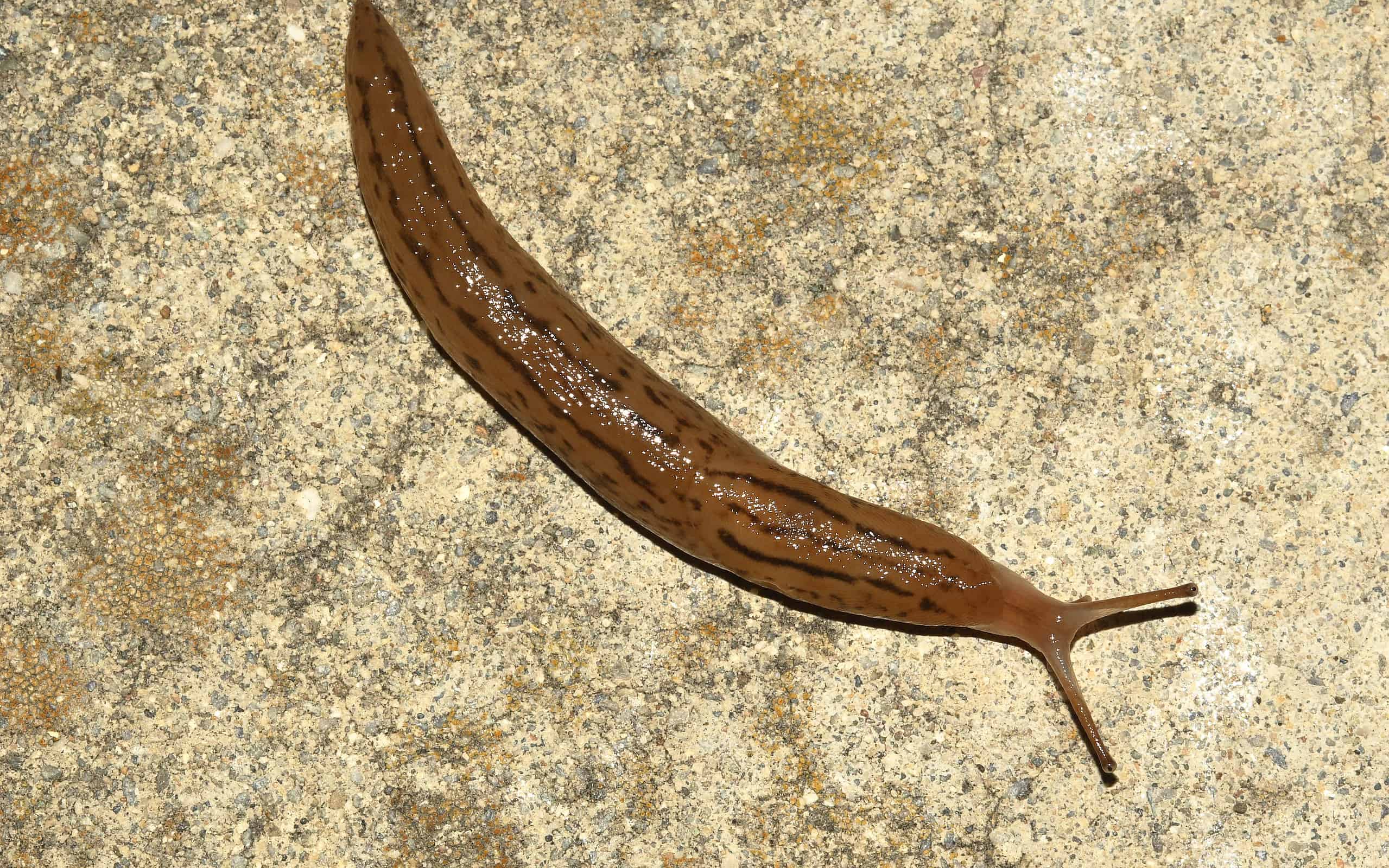
The slimy, soft animals that cause all sorts of problems in your garden have more than one brain.
©Sanjay Acharya, CC BY-SA 3.0 - License
Despite being fragile and simple, slugs have three brains. They are located in the esophagus and are called buccal, cerebral, and pleural. The buccal is used for feeding, the cerebral is used for movement and senses, and the pleural manages breathing and respiration.
For a long time, slugs were thought to have pretty weak brains overall. Generally, a grouping of neurons is considered to be weaker than average mammal brains. However, after some research, scientists found out that the way slug brains work is somewhat similar to that of a human. They even save memories and patterns in the same way the average person would.
6. Snails
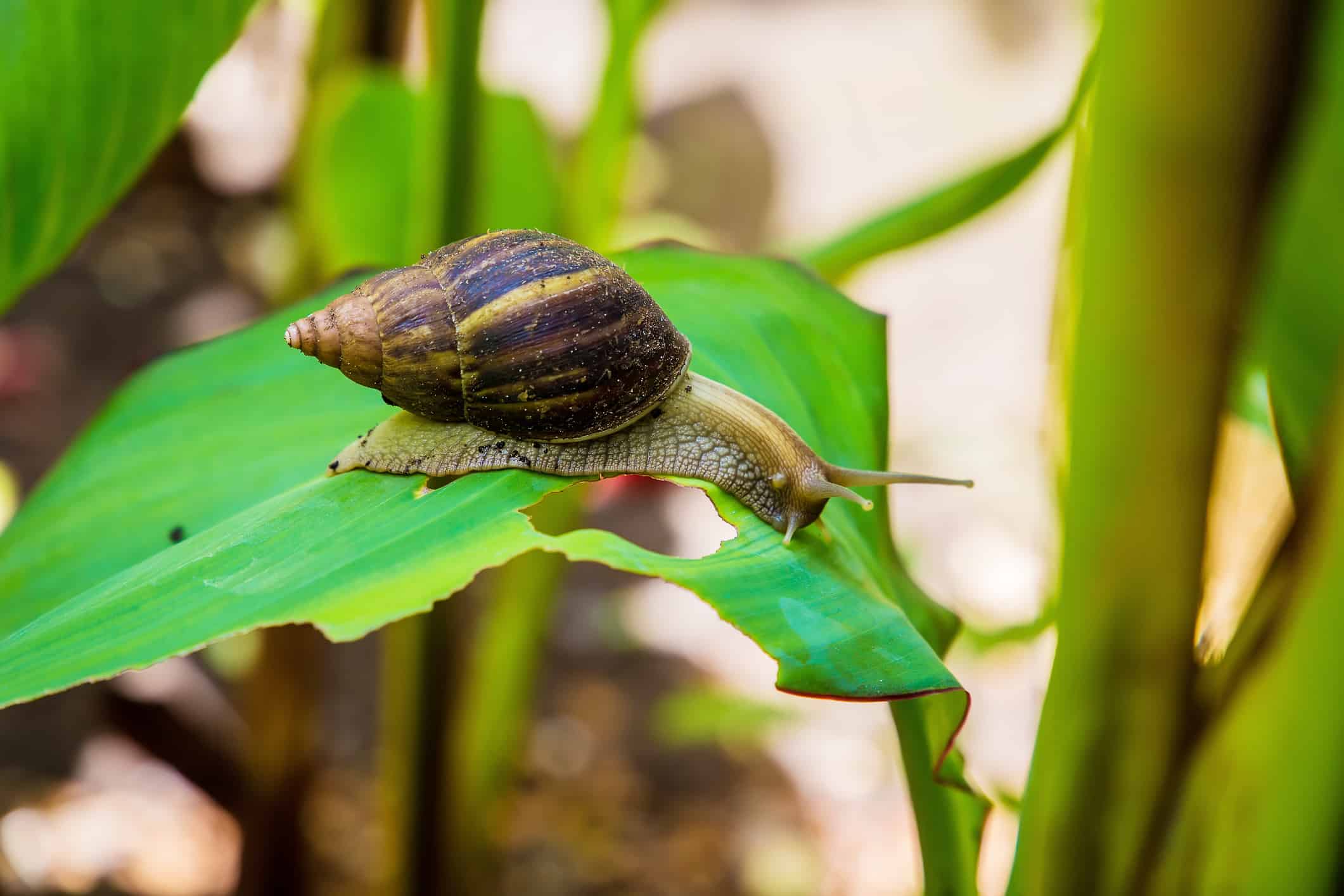
Snails have a similar structure to slugs in terms of brain structure.
©Elen Marlen/iStock via Getty Images
Slugs and snails have very similar structures. This is because they are both gastropods and part of the pulmonate group. The pulmonate group includes air-breathing gastropods instead of ones with gills.
However, they’re not entirely the same. While snails can have three brains, they may have up to six. Originally, species had two sets of ganglia, or brains, for movement, breathing, and eating. However, in many species, the two sets fused into one and formed a nerve ring around it.
In some species, especially the more primitive ones, it’s more likely to see two sets still, for a total of six brains instead of three.
5. Squids

Vision is incredibly important to squids, and a lot of their brainpower goes towards this sense.
©Whitepointer/iStock via Getty Images
Squids have three brains. The main one is used to control the body as a whole while the other two optic lobes are dedicated to the eyes.
The number a squid has isn’t the only thing unique about their brains. They aren’t shaped like those of people. Instead, their brains are shaped like donuts. Though there are three brains, they are relatively small compared to the size of the animal.
Most of the brainpower goes to one specific purpose, their vision. Based on research on squid, roughly 80 percent of a squid’s brainpower goes toward processing visual information.
4. Mosquitoes

You might not like these insects, and for good reason, but you can’t deny that they have some pretty good smarts for a bug.
©CDC/James Gathany/CC0 1.0 - License
These pesky little insects have three brains inside their body. The first is in its head, the second in the wings, and the third in the abdomen. Like with other animals on this list, the brains tend to focus on working the part of the body they are nearest.
This means that mosquitoes have a central brain that runs the whole body, one that runs the wings, and one that runs the legs and stomach.
Though their brains are tiny, about 1/1000th the size, and only 100 million neurons compared to 10 billion in people, they are still rather smart. They learn to avoid certain predator habitats, and how to find food and water via smell.
They even learn human smells so that they can specifically search them out when they need food. For mosquitos, there isn’t one distinct smell for people, but a mix of smells that differentiate them from other animals and similar mammals. Mosquitoes have to learn the combinations and how to detect them even under other smells that people use every time.
3. Octopi
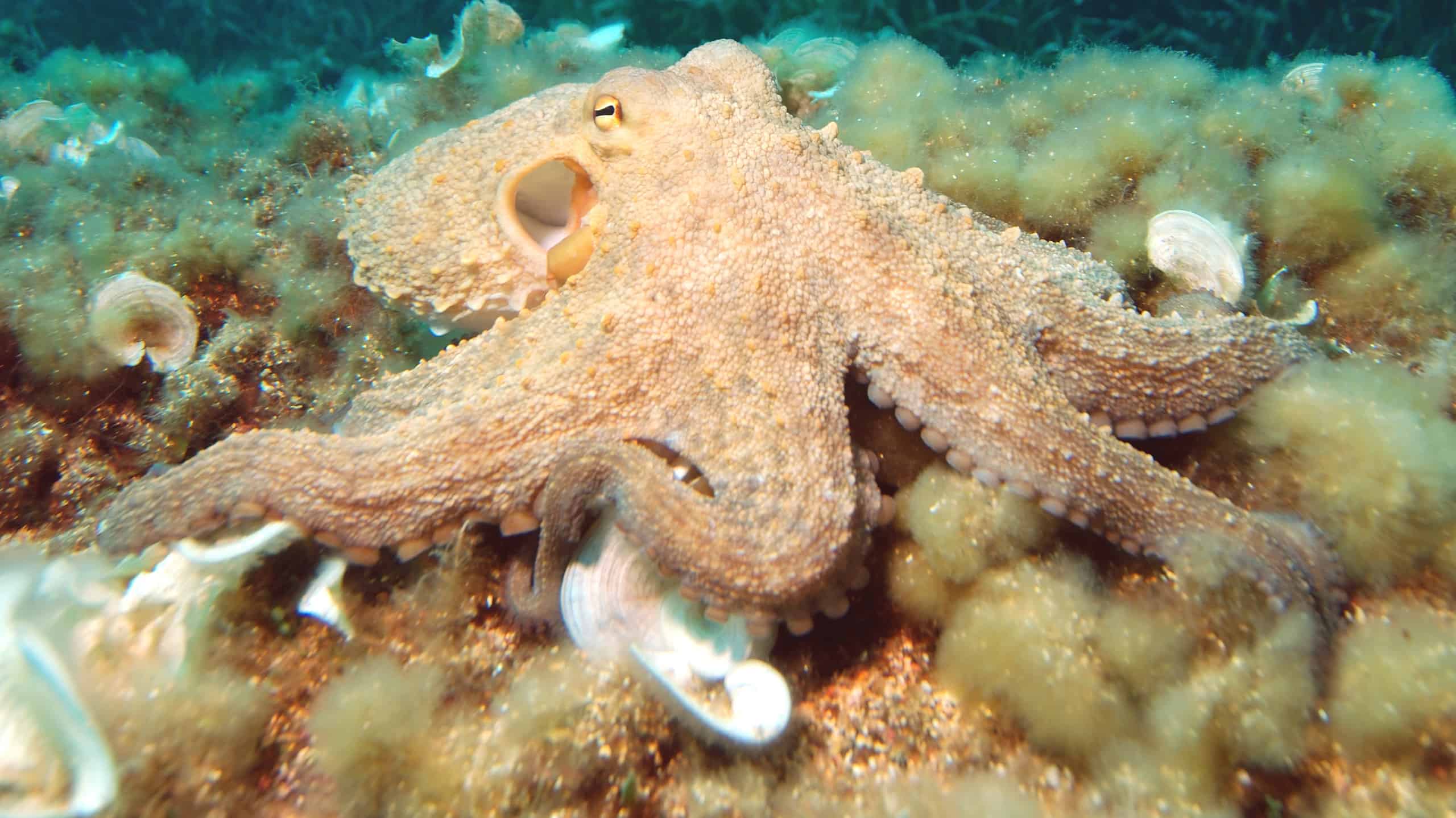
When it comes to unique body designs, octopi often take the cake.
©albert kok, CC BY-SA 3.0, via Wikimedia Commons - License
Have you ever thought how difficult it would be to control eight arms at once? Well, octopi don’t have to. They have nine brains. The main one is in their head
However, they also have one in every part of their arms. Each arm can touch, control, and move independently of the others thanks to the cluster of neurons in it. This is part of what makes them so smart. They’re able to figure out puzzles, open containers, and even untie knots.
In total, octopi have more than 500 million neurons. Out of that, only 30 percent of these neurons are located in the central brain. The brains don’t have to communicate with one another to work, but they can stay in touch to be more effective.
2. Silkworms

For being insects, these animals are actually quite intelligent.
©Esin Deniz/Shutterstock.com
Silkworms, and silkworm moths, also have quite a few brains. They have 11 distinct brain lobes. It’s quite unusual as other moths and butterflies don’t have as many lobes. Additionally, most other similar insects form one brain made up of several lobes, rather than distinct lobes.
The brains of silkworms are less than a tenth of the size of a human brain. However, for insects, they’re rather smart. They’ve been shown to remember and learn information rather than just relying on instincts.
1. Leeches

Every section of a leech has a different brain.
©279photo Studio/Shutterstock.com
Leeches may have the most brains of any animal. The inside of a leech is made up of 32 different segments. Each one of these segments has its own brain.
These brains are actually small ganglions and are responsible for their specific section. These 32 different brains have about 400 neurons each. Together, there are about 500 unique types of neurons in one leach.
It’s not quite clear why leeches have this design. It might help them make faster decisions, slow down the aging process, or that they use brains in place of nerves like other animals have.
Summary of the Animals With Multiple Brains
| Rank | Animal | Number of Brains |
|---|---|---|
| 1. | Leeches | 32 |
| 2. | Silkworms | 11 |
| 3. | Octopi | 9 |
| 4. | Mosquitoes | 3 |
| 5. | Squids | 3 |
| 6. | Snails | 3 |
| 7. | Slugs | 3 |
| 8. | Bumblebees | 3 |
| 9. | Cockroaches | 2 |
The photo featured at the top of this post is © Terpsychore/Shutterstock.com
Thank you for reading! Have some feedback for us? Contact the AZ Animals editorial team.






